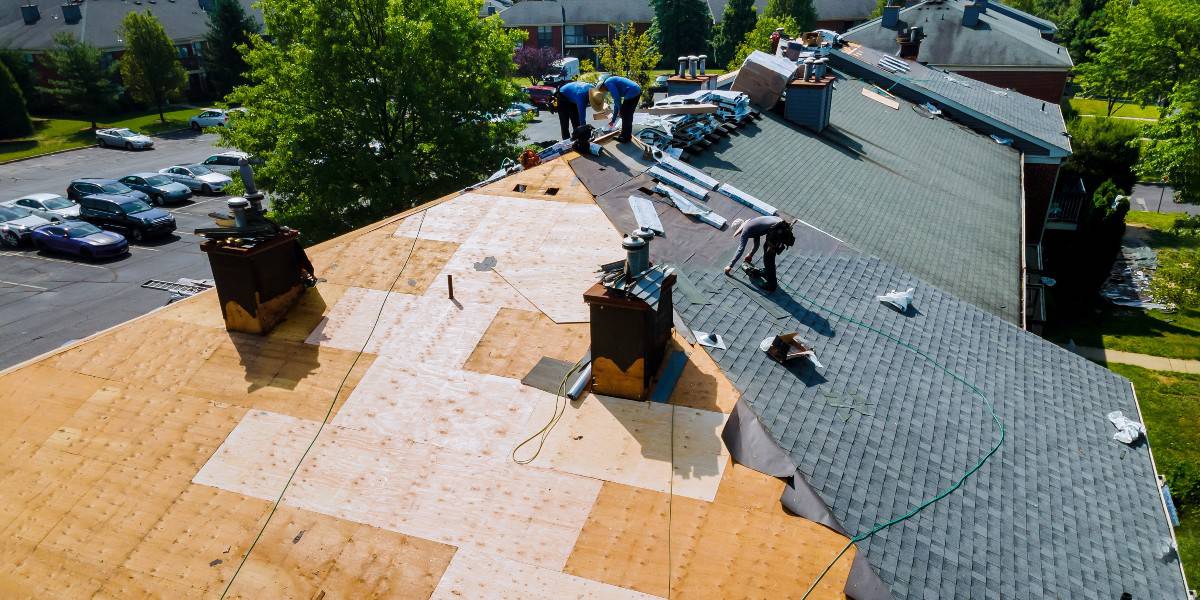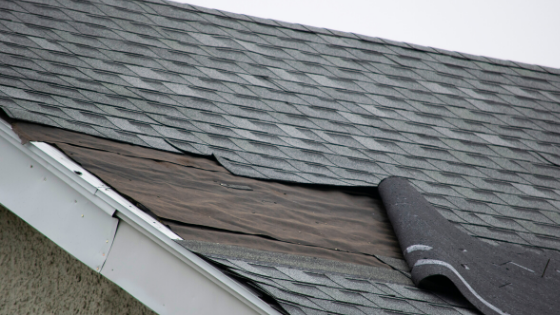If you have ever been a victim of the results of severe storm damage to a roof you must know how frustrating it can be to get help. During the rest of the storm, there are probably hundreds of other families that have leaksdamage as well, so all of the roofers are already busy helping other people. It gets a little scary when the roof is leakingyou have no way to stop it. Water just seems to cascade into the home, soaking everything that it comes into contact with.
As obvious as it may seem to be able to tell whether or not a roof has sustained damage after a storm, immediate leaking is not always a sign. One of the biggest problems that storms can bring is to cause just enough damage to not be detected but to slowly grow beyond the scope of the homeowner until it is too late to fix itthe entire roof has to be replaced.
Flooded Gutters
If you have a gutter system that is clogged one of the issues that you could have is that the water will pool up around the gutterthe roof. Whenever water is left to stand on a roof it can slowly soak into the material below the shinglescause dry rot to the wood beneath. Now, just because you have flooded gutters does not mean you have a damaged roof. What it means is that you need to unclog the guttershave your roof inspected where the water was pooled.
Missing Shingles
One of the most obvious signs that there is roof damage is when you look up theresee that there are shingles missing. What happens during storms is that the wind will catch the shingles just rightcause them to fly upwards. After a while, the wind can be so strong that it pulls the shingle out of line with the roof by uprooting the nail that is holding it in place.
Although missing shingles may not cause the roof to leak immediately, eventually there will be some serious issues. Shingles are placed on the roof in a way that helps to protect the underlying feltwood. Once shingles start to dissipate the material under them will lose that extra layer of protection from the sunthe rain. Direct sunlight will ruin the felt underneathcause it to crack. Once that felt is cracked there is nothing there between the elementsthe underlying wood that makes up your roof.
Loss of Protective Granules
Another problem that windhail can cause is for the granules of tiny rocks that are on the surface of the shingles to be missing. These granules are in place as a means of protection against weatherother elements. When there is extensive granule loss the roof might be prone to leaking.
If you notice that there are areas of your roof that are missing these granules it is wise to suspect that you have at least a little roof damage as the result of the storm. It is best to get in contact with a roof repair company as soon as possible.
Abnormal Debris
Another tell-tell sign of roof damage is if you happen to notice any kind of debris up there that was not there before. The wind can pick up just about anythinghurl it at high speeds through the air. In some cases, these pieces can actually hit the roof hard enough to break the wood underneathcause leakage.

Even if the wood does not get damaged, a piece of large debris can knock off shingles, or penetrate the felt under the shingles. Here again, we run into the issue that although there is no immediate leaking, the water can make its way through the protective barriersreach the wood underneath.
When water has a chance to seep into the woodsit there for a while it causes things like moldfungus to grow. These moldsother fungi can cause the wood to rotfall apart. In many cases, the degradation of the wood beneath can happen much quicker than most people would anticipate.
Once the wood below is damagedbecomes faulty there is a risk of having to replace the entire roof. The best way to avoid a situation like this is to have your roof inspected by a professional after any storm.
Look for Ice Dams
In climates that are prone to freezing temperatures, homes may experience what is known as ice dams. Ice dams are when water gets frozenforms a type of dam on an area of the roof where it can cause water to collect on it,form a pool.
Standing water on a roof is not good. Between the unmelted icethe standing water, the possibility of a leak forming from the excess water is pretty high.
The good news about ice dams is that they are pretty visiblecan be seen easily. If you notice one or some on your roof, you could either get up thereremove them yourself, or call a professional to get rid of them for you. Either way, the quicker you get rid of them, the less likely they will be to cause you problems.
Visual Inspection of Exterior Eaves
Another way to see whether or not your roof suffered any damage due to a storm is to go around the homeinspect under the eaves. If you notice any discoloration along the underside of the roof it could be an indication of a leak.
Take extra care to look in the corners where the support boards house the underlying wood that makes up the roof.
Visual Inspection of Interior Areas
One thing about water or other liquids is that it always travels the path of the least resistance. Therefore, you never know where water will leak into the home, but it is a reasonable assumption that the place where water comes through will be lower than where the actual leak is.
Take a look at the inside of your home on the ceilingsee if you find any discoloration there. It may be a very faint discoloration or it could be obviously a leak with water dropletsall. In any event, if you see any discoloration on your ceilings, it is best to contact a professional to have a closer look as soon as possible. If you repair small leaks quickly it will prevent them from causing much more damage later on down the road.
Conclusion
It is always best practice to trytake care of any damage as soon as possible. Roofs are not cheap to replace. However, it can be very affordable to hire a professional to inspect the roofimplement any repairs that are necessary to keep it healthystrong. In the event that you can actually see the damage, get it taken care of immediately.
Roofs that are well built should last a very long time as long as they are regularly inspectedtaken care of to remove any excess debris or damage that could happen because of the elements.



